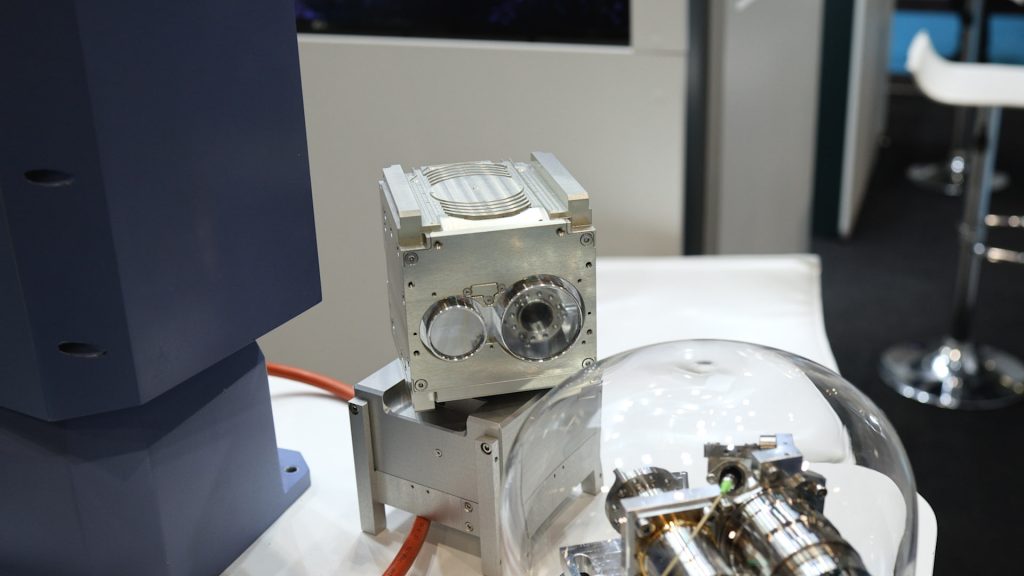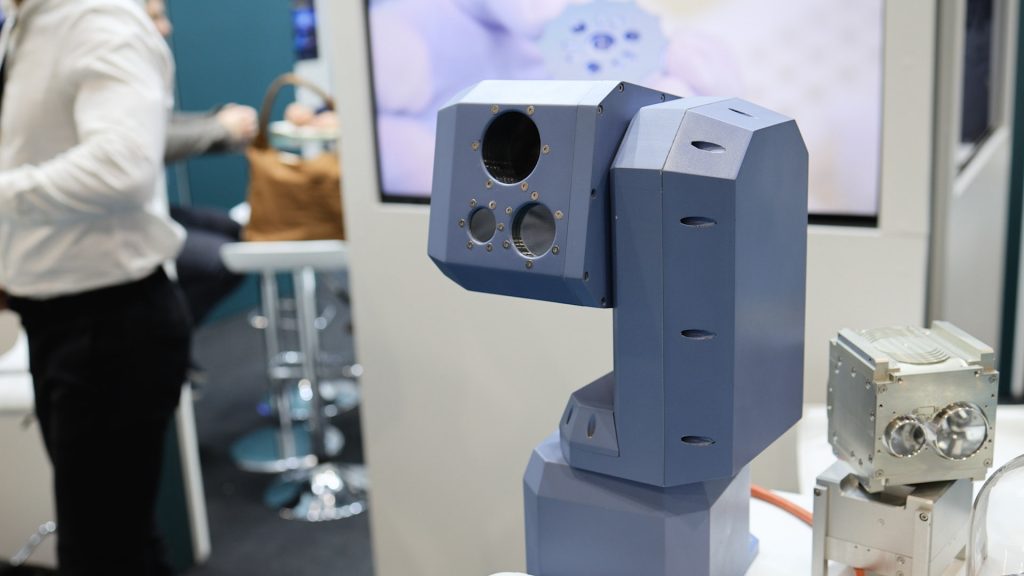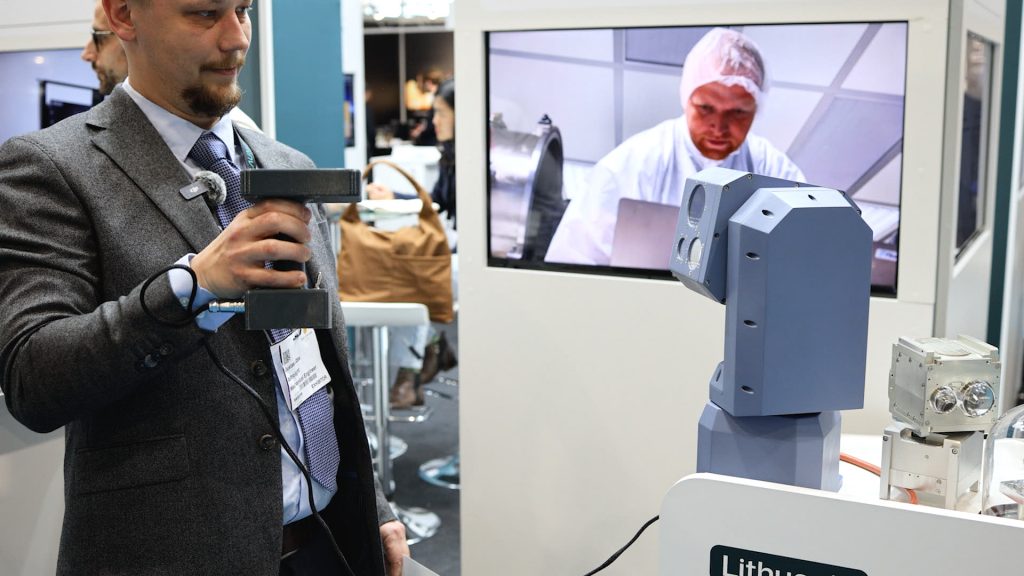Laser Communication for Next-Generation Satellite Links
The optical transmission of data between space and Earth is considered one of the key technologies of European spaceflight, as it enables interconnected satellite constellations and supports autonomous systems in orbit. The decisive performance characteristics include high data rates, low latency, and nearly interception-proof communication.
At Space Tech Expo Europe 2024, our team spoke with Justas Uza, Mechanical Design Engineer at Astrolight, about the latest technological developments and the growing importance of laser communication in space projects.
“We are preparing several missions where our optical terminals will be used. The technology has reached the maturity to be tested in real missions.” – Justas Uza, Mechanical Design Engineer Astrolight
High-Speed Transmission Systems: From Orbit to Earth
With the ATLAS terminal, Astrolight is developing a space-to-ground solution capable of data rates up to 10 Gbit/s. The technology aims to achieve efficient and secure transmission of increasing data volumes from observation and communication satellites to Earth. To remain precise and stable, the system must align a laser beam over hundreds of kilometers with extreme accuracy toward a ground station – even while moving, under vibration, and affected by atmospheric disturbances.
To ensure a consistent connection, the ATLAS terminal employs active correction, adaptive optics, and precision stabilization. Components such as laser sources, photodetectors, and control electronics are specifically designed to operate under extreme thermal and radiation conditions. Based on experience, we understand the relevance of qualified Hi-Rel components and the challenges that must be addressed for such high-performance applications.
In addition, the POLARIS system provides laser communication for the maritime sector and for inter-satellite links. POLARIS transmits data between moving platforms (ships or satellites) and relies on precise beam steering to maintain a stable connection even under changing weather, sea state, or visibility conditions. Many of the technologies used – such as vibration-resistant mechanics and robustly sealed optics – are also essential for space environments.



An integrated communication architecture is created by linking space, ground, and maritime systems, enabling laser links to be used in a wide range of environments – from orbit to the ocean surface. This integration represents a significant step toward globally connected optical communication networks.
At the same time, Europe is investing in extensive programs such as ESA ScyLight, HydRON, and IRIS², all aimed at building optical communication networks through satellite constellations. Developments such as ATLAS and POLARIS complement these initiatives with compact, rapidly deployable technologies.
European Laser Communication Competence
Advances in optical communication clearly demonstrate how rapidly European expertise in this technology field is developing. Companies such as Astrolight contribute to ensuring that future laser terminals and ground stations are based on European components, standards, and qualification processes. This represents a strategic contribution to strengthening regional sovereignty in satellite communication – an aspect that is of central importance to MSA Components with its focus on Hi-Rel components and qualification.
Looking Ahead
The first demonstration missions are already in preparation or have been successfully completed:
– The ATLAS terminal is planned to demonstrate an optical space-to-ground link in 2025 as part of the PeakSat mission.
– The POLARIS system was successfully tested in 2025 during the NATO REPMUS demonstration between two ships.
Projects like these illustrate how laser communication is moving from laboratory environments to real-world applications and establishing itself as a key technology for the data transmission systems of the future.
We look forward to exploring these developments further together with our partners from the European Hi-Rel ecosystem at Space Tech Expo Europe 2025.

Visit us at the Space Tech Expo Europe 2025
As in previous years, we at MSA Components will be exhibiting at Space Tech Europe. We look forward to engaging with our customers and partners to discuss upcoming missions, qualification needs and custom solutions for next-generation spacecraft and the space industry. Please visit our stand to meet us in person and discuss your projects and challenges, and find out how MSA Components can support you with the latest technological innovations on the market.
You will find us at booth number F11.
Of course, you are welcome to schedule an appointment with us beforehand.

